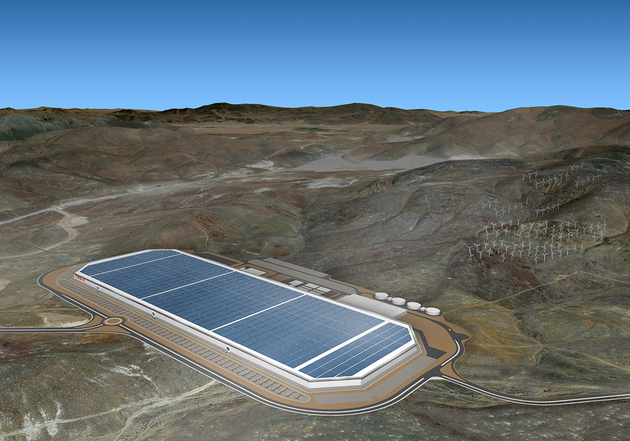
Photo/Dfic
Dec. 18 (NBD) -- U.S. electric automaker Tesla is to begin construction of its Gigafactory 3 in Shanghai. The total investment of the project hit 50 billion yuan (7.3 billion U.S. dollars), with initial injection of 16 billion yuan (2.3 billion U.S. dollars), the 21st Century Business Herald reported.
In October this year, Tesla announced it has won the bid for a land in shanghai's Lingang industrial zone, and two months later, Shanghai government revealed the field leveling for the land was almost completed.
The plant is estimated to be partially put into operation by the second half of next year, which is one year earlier than planned.
Tesla will first produce its Model 3 and Model Y in Shanghai with an initial production target of 250,000 electric cars per year.
Featuring an integration of functions including R&D, manufacturing, and sales, the CKD (completely knock down) plant is to enable an annual capacity of 500,000 vehicles after two to three years of construction.
Shanghai government is encouraging enterprises along the new-energy vehicle supply chain to set up their branches in the city, so as to accelerate the forming of a complete automobile industry cluster and further promote the localization of Tesla.
As the factory construction speeds up, building a domestic supply chain system becomes one of the major challenges Tesla is facing.
Zhong Shi, analyst of automobile industry, said it is hard for Tesla to still rely on American suppliers when it comes to China, but Tesla's products that are different from those from OEMs are totally new to domestic suppliers. Thus it will take the U.S. company a considerable amount of time and efforts to search for qualified suppliers and to carry out R&D and manufacturing of components.
If this trend continues, Tesla will once again fail to achieve its output target.
When Model 3 was first released, Elon Musk set a goal to produce 5,000 vehicles a week, but the production volume had been far behind the scheduled amount for nearly a year. In the last week of June this year, 5,031 models rolled off the line, which finally reached the weekly production standard.
It is noteworthy that though Gigafactory 3 is regarded as a new path for Tesla to improve its capacity, it also brings huge pressure to the start-up.
The company never made profits annually in the past 14 years and it reported profits merely in the first quarter of 2013 and the third quarter of 2016 and 2018 since it went public in 2010.
As for the impact that the localization of Tesla can have on Chinese new-energy car industry, automobile industry analyst Cao He held that the mass production of Tesla models will force domestic electric car makers to differentiate themselves from counterparts in the competition. The domestic market will be reshaped over the following three year, and only one or two players will stand out in the end, said Cao.
Zhong shared another view that currently Tesla is positioned itself as a player in the high-end car market which is not the one that most of the Chinese auto makers are situated.
But the U.S. firm could also face fierce competition with traditional auto giants after two or three years when it realized large-scale production.
Email: zhanglingxiao@nbd.com.cn


 川公网安备 51019002001991号
川公网安备 51019002001991号





